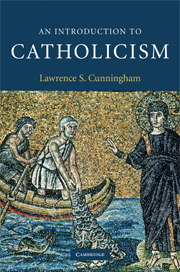Book contents
- Frontmatter
- Contents
- Illustrations
- Preface
- Acknowledgments
- 1 The many meanings of Catholicism
- 2 Roman Catholicism
- 3 Being Catholic: Some typologies
- 4 Catholicism in place and time
- 5 Catholic worship
- 6 The rule of faith
- 7 Catholic spirituality
- 8 The missionary character of Catholicism
- 9 Catholic reformation(s)
- 10 The moral life
- 11 The contemporary Catholic Church
- 12 Reading Catholicism: Bibliographical resources
- Index
- References
3 - Being Catholic: Some typologies
Published online by Cambridge University Press: 05 June 2012
- Frontmatter
- Contents
- Illustrations
- Preface
- Acknowledgments
- 1 The many meanings of Catholicism
- 2 Roman Catholicism
- 3 Being Catholic: Some typologies
- 4 Catholicism in place and time
- 5 Catholic worship
- 6 The rule of faith
- 7 Catholic spirituality
- 8 The missionary character of Catholicism
- 9 Catholic reformation(s)
- 10 The moral life
- 11 The contemporary Catholic Church
- 12 Reading Catholicism: Bibliographical resources
- Index
- References
Summary
INTRODUCTION
In the previous chapter we viewed the Catholic tradition “from on high” by a consideration of the history and development of the papacy. We started at that level because, as we noted, if there is one element that is peculiar to the Catholic Church it is its insistence that the bishop of Rome, the pope, is central to the self-identification of the Church in his role as the center of Catholic unity. Everyone who knows anything about Catholicism understands that. In the official writings of the Church, in everything from its magisterial and papal documents to its official catechism, it is almost a commonplace to say that what makes the Church Catholic is the unity among all Catholic bishops and their common unity with the bishop of Rome, the pope.
However, Catholicism cannot be understood only from the top down or from its center outward. The Catholic faithful are all members of the Catholic Church; they share a common baptism, are held to the same moral order, profess the same rule of faith, recognize a common life of worship, and are challenged to the same imperatives of the Gospel. For that reason alone, it is necessary to take into account the history of the Church not only as a record of what its hierarchy does but how Catholics through history have lived their faith.
- Type
- Chapter
- Information
- An Introduction to Catholicism , pp. 49 - 74Publisher: Cambridge University PressPrint publication year: 2009

